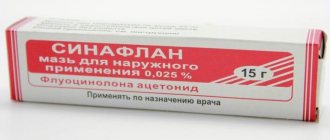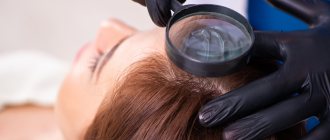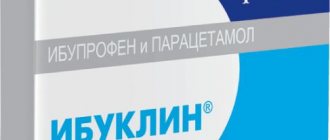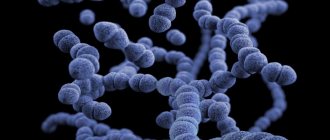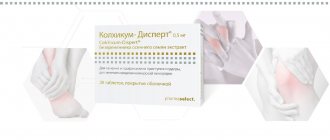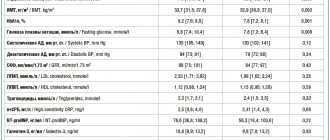Dosage form, composition
The active component of the drug is fluocinolone acetonide. Sinaflan is available in several forms for external use:
- liniment: yellowish viscous substance containing 0.25 mg of active substance per 1 g;
- gel: transparent yellow mass with similar content of fluocinolone acetonide;
- cream: a homogeneous oily substance.
Among the form-building compounds and stabilizers of the product: glycerin, paraffin, liquid paraffin, lanolin, ceresin, propylene glycol, purified water and other components.
All dosage forms of the drug are packaged in 10 or 15 ml tubes and cardboard boxes, equipped with instructions for its use.
What is Sinaflan intended for?
The drug reduces the manifestation of inflammatory reactions of the skin during autoimmune processes, exposure to toxins, biological and chemical allergens. Fluocinolone binds to cell cytoplasms, inhibits the production of the enzyme phospholipase A2, which provokes negative symptoms of irritation. As a result of using Sinaflan:
- the concentration of leukocytes and macrophages in the area of inflammation decreases;
- fluid outflow improves;
- metabolic processes inside cells are normalized: absorption of glucose, potassium, calcium, sodium ions;
- the production of arachidonic acid, one of the provocateurs of inflammation, is regulated.
Sinaflan inhibits the activity of cellular immunity: it reduces the accumulation of T-lymphocytes, thereby eliminating the factors of allergic manifestations. The substances of the drug act quickly directly at the sites of application, so the ointment has proven itself to be the best in the treatment of rashes and other superficial formations on the skin.
Fluocinolone easily penetrates into the stratum corneum, accumulates in them as therapy continues and persists for up to 15–20 days from the moment the application is stopped, providing a therapeutic effect. The components of the drug penetrate into the systemic bloodstream in minute concentrations, which are not hazardous to health. They are transformed in the liver and are completely eliminated from the body.
Sinaflan
Sinaflan (active ingredient – fluocinolone acetonide) – glucocorticosteroid
for topical use in dermatology. It has anti-inflammatory, antiallergic, antipruritic and antiexudative effects. Reduces or completely eliminates inflammatory dermatological reactions. The mechanism of action of glucocorticosteroid ointments is based on the suppression of the synthesis of prostaglandins, mediators of the inflammatory process. In the presence of an allergic component, glucocorticosteroids inhibit the development of inflammation in response to the formation of an antigen-antibody complex. Due to this property of the pharmacological group and, in particular, sinaflan, as well as due to the effect on metabolic processes in the skin, corticosteroids exhibit an antipruritic effect. The first generation of external glucocorticosteroids includes hydrocortisone and prednisolone, which are relatively weak substances. Creams and ointments with these compounds can be used in children and applied to the skin of the face without fear of the formation of the so-called “seroid skin”. Examples of such medications include laticort, locoid, and prednisolone ointment. The second generation is represented by fluorinated glucocorticosteroids of medium strength, having one fluorine atom in their molecule. These are fluorocort, polcortolon, sikorten, etc. The third generation consists of potent fluorinated glucocorticosteroids. Examples of such drugs are celestoderm, dermovate. And finally, the fourth generation includes prednisolone derivatives containing two fluorine atoms. These drugs are endowed with high anti-inflammatory and antiallergic activity, and are practically not absorbed into the systemic circulation when applied topically, which reduces the likelihood of side effects. A typical example of such a drug is sinaflan. In the implementation of its pharmacological effect, the leading role is played by the mechanism mediated by the cytosolic receptors of the drug.
Its essence lies in the fact that, penetrating into the nucleus of the target cell (keratinocytes, lymphocytes, fibroblasts), the hormone receptor complex increases the expression of genes that control the synthesis of lipomodulins, which, in turn, suppress the activity of lysosomal phospholipases, blocking the production of inflammatory mediators prostaglandins and leukotrienes. In addition, sinaflan inhibits the synthesis of intercellular substances (glycosaminoglycans, collagen and elastin), suppress the functioning of the hypothalamic-pituitary-adrenal system, inhibit immune reactions, i.e. Along with a pronounced anti-inflammatory effect, the systemic effect of the drug is not so pronounced. The presence in the molecule of fluocinolone acetonide - the active component of sinaflan - of two fluorine atoms enhances its binding to steroid receptors of the skin and somewhat slows down the inactivation of the drug, which to a certain extent increases the risk of developing negative side effects in comparison with drugs whose molecule contains only one fluorine atom. However, in any case, the introduction into clinical practice of sinaflan and other external glucocorticosteroids with two fluorine atoms marked a genuine revolution in the treatment of a number of dermatological diseases. Such a modification of the chemical structure of the molecule significantly increased the pharmacological effectiveness of external glucocorticosteroids.
Sinaflan is available in two dosage forms: ointment for external use and liniment. Use the drug 1-3 times a day. If sinaflan is used for acne vulgaris or rosacea, there is a possibility of exacerbation of the disease. In infants and adolescents during puberty, the drug should be used with extreme caution. Sinaflan is compatible with antibacterial drugs.
For what diseases is Sinaflan indicated?
The drug is approved for use for inflammation of the skin not associated with infectious processes:
- psoriatic rashes;
- eczema of the body and scalp;
- lichen planus;
- multiple erythemas;
- superficial skin burns;
- itching of unknown origin;
- neurodermatitis;
- allergic symptoms;
- dermatitis;
- seborrhea;
- skin reactions to insect bites.
Before starting use, it is important to find out the nature of the symptoms. The use of Sinaflan for infectious or mixed manifestations may complicate the physical condition.
Contraindications
Sinaflan should not be used for the following skin pathologies:
- for mechanical damage to the integument: wounds, abrasions, ulcerative processes;
- when tissues are damaged by viruses, fungi, bacteria, herpes and other infectious agents;
- for skin tuberculosis;
- benign and malignant neoplasms: including on the surface of birthmarks and moles.
Hormonal ointment should not be used for application to the mucous membranes of the eyes, mouth, or nipple halos. It is undesirable to treat formed psoriatic plaques with clearly disturbed epithelial structure. This drug should also not be used for acne and inflammatory nodules of unknown origin, demodicosis. The glucocorticoid in its composition can provoke further skin damage, aggravating the clinical picture.
You will also have to exclude parking during pregnancy and lactation, since the hormone can cause unwanted reactions in the child’s body.
Sinaflan FT (gel)
- If the drug causes symptoms of irritation or allergic skin reactions (skin itching, burning or redness), its use should be discontinued immediately. Do not use continuously for more than 2 weeks. With prolonged use over a large surface of the body, the frequency of side effects and the possibility of developing edema, hypertension, hyperglycemia, and decreased body resistance increases. The drug should not be applied to the face. Avoid contact with eyes. For the treatment of skin diseases accompanied by infection, it is recommended to prescribe the drug together with antimicrobial agents. When using occlusive dressings, due to increased bioavailability, the development of general resorptive effects characteristic of GCS is possible. With external use of the drug, the following are possible: a decrease in the production of ACTH by the pituitary gland, inhibition of the adrenal-pituitary gland system, a decrease in the level of cortisol in the blood and the development of iatrogenic Itsenko-Cushing syndrome, which disappears after discontinuation of the drug. Periodic monitoring of adrenal function is indicated by determining cortisol in the blood and urine after stimulation of the adrenal glands with AC TG during long-term use. If an infection develops at the site of application of the drug, treatment should be discontinued and appropriate antibacterial or antifungal treatment should be administered. Avoid applying the gel to the eyelids or skin around the eyes in patients with closed-angle and open-angle glaucoma, as well as in patients with cataracts. Considering the possibility of increased symptoms of the disease. Because corticosteroids can be absorbed through the skin. Long-term treatment and use on large areas of skin under an occlusive dressing in children should be avoided. Because children have a higher body surface-to-weight ratio than adults, they are at higher risk for systemic corticosteroid side effects, including hypothalamic-pituitary-adrenal axis dysfunction and Cushing's syndrome. Corticosteroid therapy may have side effects on the growth and development of children. Periodic monitoring of the function of the adrenal cortex is indicated by determining cortisol in the blood and urine after stimulation of the adrenal glands with ACTH. If an infection develops at the site of application of the gel, appropriate antibacterial or antifungal treatment should be carried out. If symptoms of infection do not go away, you should stop using the gel while the infection is being treated. The drug should be used with caution in the presence of subcutaneous tissue atrophy, mainly in elderly patients. Avoid contact of the drug with eyes, mucous membranes and wounds. Do not use the drug in the areas around the eyes, due to the risk of glaucoma or cataracts. Use with extreme caution in the treatment of patients with psoriasis, since topical use of glucocorticosteroids for psoriasis can be dangerous due to relapse caused by the development of drug resistance, the risk of generalized pustular psoriasis and systemic toxicity caused by skin dysfunction. On the skin of the face, as well as on the skin of the groin and armpits, use only in cases of special need, taking into account increased absorption and the high risk of side effects (telangiectasia, dermatitis perioralis), even after short-term use. Use with caution in existing conditions of subcutaneous tissue atrophy, especially in the elderly. During treatment, it is not recommended to be vaccinated against smallpox, as well as other types of immunization (especially with long-term use on large areas of the skin) due to the possible lack of an adequate immunological response in the form of production of appropriate antibodies. Contains methyl parahydroxybenzoate and propyl parahydroxybenzoate, which may cause allergic reactions. Contains propylene glycol. May cause skin irritation. Do not use on breast skin.
Use only in short courses on small areas of skin. The drug should not be applied to the face. Avoid getting the drug into your eyes.
Use during pregnancy and lactation Animal studies have shown that fluocinolone acetonide has embryotoxic and teratogenic effects. Animal studies with other glucocorticoids have found evidence of fetal damage (eg, cleft palate, skeletal abnormalities, and fetal mortality). When using glucocorticoids during pregnancy, especially during the first three months, the benefits and risks must be weighed. Animal studies have shown that the use of glucocorticoids at subteratogenic doses during pregnancy is associated with an increased risk of intrauterine growth restriction, as well as cardiovascular disease and/or metabolic disorders. In addition, the risk may be increased by permanent changes in glucocorticoid receptors, changes in neurotransmitter turnover. The use of the drug during pregnancy is contraindicated. If the use of glucocorticoids during pregnancy is unavoidable, hydrocortisone and prednisolone should be used because these substances are inactivated in the placenta by the 11βHSD enzyme and therefore there is greater protection from these substances compared to most synthetic glucocorticoids. Lactation There is no data on the penetration of fluocinolone acetonide into human breast milk. Other glucocorticoids are secreted into breast milk. When using for a long time or treating large surfaces of the body, a woman should not resort to breastfeeding. Contact of the infant with the treated skin surface should be avoided.
Effect on the ability to drive a car and operate machinery No effect.
How to use Sinaflan
The drug is approved for use from the age of 2 years.
Cream, gel or ointment is applied to clean areas of the skin in a thin layer, distributing the mass over the surface with light rubbing movements. To prevent the product from staining your clothes, you can cover the application areas with a breathable bandage.
The procedure can be repeated 2–4 times a day, depending on the degree of damage. Children are recommended to use the product no more than once a day. The course of treatment for facial skin is no more than 1 day. The maximum duration of therapy for other parts of the body is 2 weeks.
Sinaflan, ointment 0.025%, 15 g
Manufacturer
Nizhpharm JSC, Russia
Compound
1 g of ointment contains: Active ingredient: Fluocinolone acetonide (sinaphlan) - 0.25 mg, Excipients: Propylene glycol - 49.75 mg, Ceresin - 50.00 mg, Lanolin - 50.00 mg, Vaseline - up to 1.0 g .
pharmachologic effect
Pharmaceutical group:
glucocorticosteroid for local use.
Pharmaceutical action:
Sinaflan has anti-inflammatory, antiallergic, antiexudative and antipruritic effects.
Reduces symptoms and eliminates inflammatory skin reactions.
Pharmacokinetics:
After absorption from the surface of the skin, it binds to plasma proteins and undergoes metabolism, which occurs mainly in the liver. Excreted through the kidneys.
Active components
Fluocinolone acetonide
Indications
— Eczema, — atopic dermatitis, — simple chronic lichen (limited neurodermatitis), — toxicerma, — simple allergic dermatitis, — seborrheic dermatitis, — skin itching, — urticaria, — prurigo, — diaper rash, — exudative erythema multiforme, — psoriasis (exudative form); - lichen planus, - discoid lupus erythematosus, - hand dyshidrosis, - otitis externa, - first degree burns, - insect bites.
Recommendations for use
Externally. A small amount of the drug is applied to the skin, previously wiped with a swab moistened with an antiseptic liquid, 2-4 times a day and lightly rubbed. If necessary, you can apply an occlusive dressing, leaving it on the affected surface for up to 3-4 days. It is not allowed to apply more than 2 g per day under a bandage. The duration of treatment depends on the nature of the disease and is usually 5-10 days, with a long course of the disease up to 25 days. The ointment is preferable to use for dry forms of dermatoses.
Contraindications
Hypersensitivity to the components of the drug; bacterial, viral, fungal skin diseases - pyoderma, chicken pox, herpes, actinomycosis, blastomycosis, sporotrichosis; skin manifestations of syphilis, skin tuberculosis, diaper rash, rosacea, extensive psoriatic rashes (plaques), anogenital itching; trophic ulcers of the leg associated with varicose veins, erosive and ulcerative lesions of the gastrointestinal tract, wounds at the sites of application; skin cancer, nevus, atheroma, melanoma, hemangioma, xanthoma, sarcoma; pregnancy and lactation, children's age (up to 2 years). Use with caution in girls during puberty.
Side effects
The development of secondary infectious skin lesions and atrophic changes in it (burning, itching, dry skin, steroid acne, folliculitis) is possible. With long-term use - hypertrichosis, alopecia, especially in women, secondary immunodeficiency (exacerbation of chronic infectious diseases, generalization of the infectious process, development of opportunistic infections); skin atrophy, local hirsutism, telangiectasia, purpura, pigmentation disorder. When applied to large surfaces, systemic manifestations are possible (gastritis, “steroidal” gastric ulcer, adrenal insufficiency, Itsenko-Cushing syndrome, “steroidal” diabetes mellitus, slowdown of reparative processes).
Interaction
Compatible with antimicrobial agents.
Reduces the activity of antihypertensive, diuretic, antiarrhythmic drugs, potassium supplements. Diuretics (except potassium-sparing drugs) increase the risk of hypokalemia.
How to take, course of administration and dosage
Externally.
A small amount of the drug is applied to the skin, previously wiped with a swab moistened with an antiseptic liquid, 2-4 times a day and lightly rubbed.
If necessary, you can apply an occlusive dressing, leaving it on the affected surface for up to 3-4 days.
It is not allowed to apply more than 2 g per day under a bandage.
The duration of treatment depends on the nature of the disease and is usually 5-10 days, with a long course of the disease up to 25 days.
The ointment is preferable to use for dry forms of dermatoses.
Overdose
Itching, burning of the skin at the site of application of the ointment; with long-term use on a large surface of the body, hyperglycemia, glucosuria, Itsenko-Cushing syndrome. Treatment: symptomatic with gradual withdrawal of the drug.
Purpose
Glucocorticosteroid for local use
Description
The ointment is light yellow to yellow in color.
Functional Features
After absorption from the surface of the skin, it binds to plasma proteins and is metabolized in the liver to form inactive metabolites. It is excreted primarily by the kidneys.
Equipment
Ointment for external use 0.025%. 10 g or 15 g in aluminum or polyethylene laminate tubes. Each tube, along with instructions for medical use of the drug, is placed in a cardboard box.
Special instructions
Use only in short courses on small areas of skin. The drug should not be applied to the face. Avoid getting the drug into your eyes. The duration of administration in children should not exceed 5 days. It is recommended to wear loose clothing during treatment. In patients with acne vulgaris or rosacea, the disease may worsen during treatment. To prevent local infectious complications, it is recommended to prescribe in combination with antimicrobial agents. Without a doctor's prescription.
Release form
Ointment for external use.
Storage conditions
In a dry place, out of reach of children, at a temperature not exceeding 15 °C.
Best before date
5 years. Do not use the drug after the expiration date.
Active substance
Fluocinolone acetonide
Dosage form
ointment
Barcode and weight
Barcode: 46002747, 0000046002747 Weight: 0.020 kg
Possible adverse reactions
When using the drug Sinaflan, the following are rarely possible:
- increased itching, flaking, dry skin;
- the appearance of keratosis;
- swelling, redness, burning.
With long-term use, there are isolated cases of impaired carbohydrate metabolism, increased blood pressure, and decreased immunity. The risk of side effects is higher when Sinaflan is combined with other hormonal ointments or when taking systemic glucocorticoid drugs.
